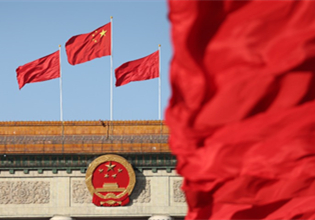Industrial sector to experience environmentally-friendly development in Inner Mongolia
During the 14th Five-Year Plan period (2021-25), North China's Inner Mongolia autonomous region will make efforts to promote energy conservation and carbon reduction in the industrial sector.
In so doing, Inner Mongolia has formulated the implementation plan for peaking carbon emissions in the industrial sector and the implementation plans to reduce and peak carbon emissions in the iron and steel, nonferrous metal, building material, and chemical industries.
According to Li Zhongkai, director of the Inner Mongolia Industry and Information Technology Department, five types of measures will be taken in the following years.
They include clarifying the maximum production capacity of key industries, improving industrial access standards, speeding up the elimination of outdated and excess production capacity, promoting energy-saving technological transformation and industrial structure adjustment.
During the 2021-25 period, Inner Mongolia's steel production capacity will be limited to 36 million metric tons, that of electrolytic aluminum to 7 million tons, ferroalloys to 14 million tons, coke to 60 million tons, and calcium carbide to 15 million tons.
Meanwhile, Inner Mongolia has formulated an implementation plan for the application of energy-saving technology. All enterprises whose energy consumption per unit product does not reach an advanced level will be required to make use of more efficient technology.
Inner Mongolia plans to significantly reduce energy consumption per unit of products in key industries within three years.
In the same period, the proportion of production capacity reaching the benchmark level is expected to exceed 30 percent, and key industries in the industrial field will work to reduce standard coal use by 5 million tons.
In addition, Inner Mongolia will work to cultivate five advanced manufacturing clusters that contribute significantly to reducing carbon emissions, including clusters for green agricultural and livestock product processing, modern equipment manufacturing, new chemicals, new materials, and biomedicine.
By 2025, the output value of the manufacturing industry is expected to account for more than the energy industry, the output value of modern equipment manufacturing is expected to account for about 10 percent of the industrial output value, and the output value of new chemicals will account for more than 50 percent of the chemical industry.



 Print
Print Mail
Mail





